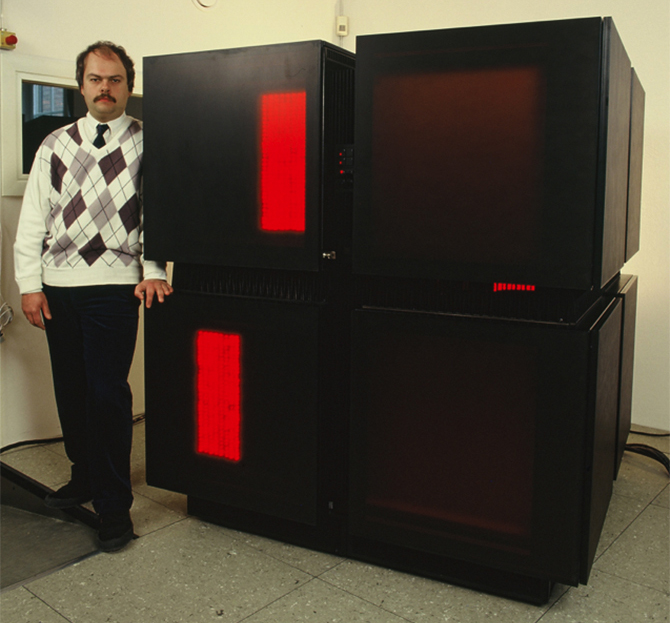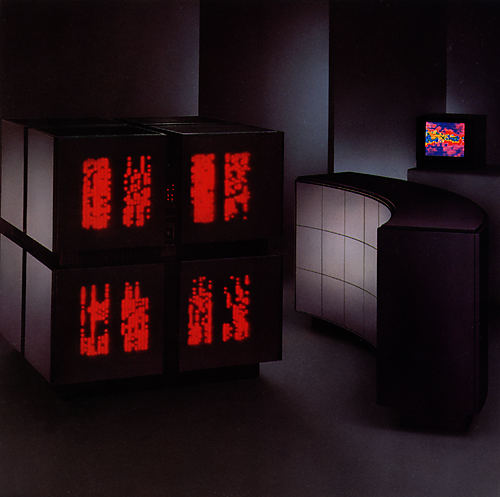Bellman
Bellman was a massively parallel Connection Machine computer system at KTH that lead to the establishment of PDC. It was the first parallel computer that was made available for broad academic use in Sweden. Bellman was in operation from 1989 to 1997.
Bellman was initially installed at the KTH Royal Institute of Technology as an 8K CM-2 Connection Machine from Thinking Machines Corporation (TMC) in the autumn of 1989. The system was named after the famous Swedish composer and poet, Carl Michael Bellman , as his initials were “CM” just like the Connection Machine. This started the tradition of naming PDC’s systems after Swedes who were famous in the arts.
In December 1991, the system was upgraded to become an 8K CM-200 and a 10 GB DataVault was installed. The DataVault was probably the first commercially available Redundant Array of Independent Disks (RAID) disk and was specially designed for the Connection Machine. If you visit PDC in person, the long curvy bench just inside the entry door is actually the cabinets of the DataVault. The 8K CM-200 had 8192 bit-serial processors, 256 × 64-bit floating-point processors and 1024 MB of main memory. It could be used either as an 8K machine or as two separate 4K machines.The 8K version of Bellman was in 361st place in the Top500 list in June 1991 .

In 1994, Bellman was upgraded to a 16K CM-200 which had 16,384 processors, 2 GB of memory and the 10 GB DataVault. This version of the CM-200 was in 357th place in the June 1994 Top500 list . The Bellman system was taken out of operation in September 1997.
For more information about how PDC was created as a result of Bellman being installed at KTH, see How PDC began .
Information about the technical evolution of Bellman and research done on it can be found in the PDC Progress Reports for 1990-1996.
After Bellman was replaced, it was donated to the National Museum of Science
and Technology in Stockholm where it is currently part of the
Hyper Human exhibition
. The museum is the only museum in Europe that has a Connection Machine in its collection, as noted in a
blog post from the museum
(in Swedish).

